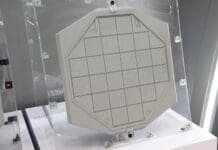This post is also available in:
 עברית (Hebrew)
עברית (Hebrew)
Microrobots have been studied by the U.S. military for years, but they tend to be simple machines with limited intelligence. Recently, however, the Defense Advanced Research Projects Agency (DARPA) launched a new initiative to improve microrobots.
The SHRIMP program, short for SHort-Range Independent Microrobotic Platforms, is a potentially life-saving initiative of DARPA that is being designed to navigate through hazardous natural disaster zones.
What differentiates it from microrobotics limited by SWaP (size, weight and power) constraints is its size. DARPA has managed to shrink the tech down to the size of an insect — a scale of mm-to-cm, according to engadget.com.
Program manager Dr. Ronald Polcawich says the smaller scale is what gives SHRIMP robots an advantage over larger robots — which are too large to inspect damaged environments.
The SHRIMP robots are part of DARPA’s push to drive forward functional microrobotics that offer unrestricted mobility, dexterity, and maneuverability.
Downsizing robotics comes with various trade-offs, which notably include the loss of technical power and control to effectively carry out tasks. To combat such challenges, DARPA plans to pursue actuator materials and mechanisms that would prioritize factors like strength-to-weight ratio and maximum work density. Advances in these areas could equip SHRIMP with both the endurance and ability required to execute critical tasks.
The tiny robots will undergo rigorous “Olympic-style” trials which will scrutinize their capacity to jump, lift increasingly larger masses, and traverse inclines and measure its overall efficacy. The tests are expected to begin in March 2019. DARPA says it anticipates a total of $32 million to help fund research and development.

























